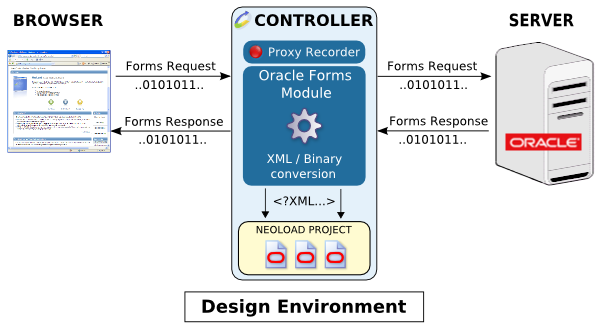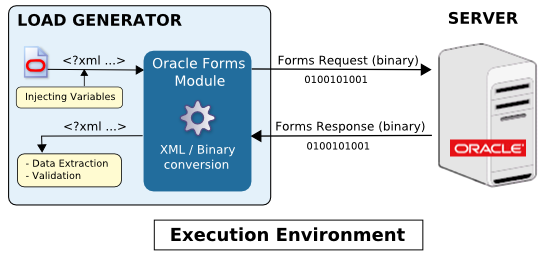|
|
|
|
Oracle Forms requests
Overview
The optional Oracle Forms module allows the user to load test Oracle Forms web applications. The module supports versions 9i and 10g of the OC4J (Oracle Container 4 Java) application server. Oracle Forms is a technology developed by the Oracle Corporation.
For more information, click the image below to see the Neotys video about Oracle Forms in NeoLoad:
Recording
The following diagram shows how the Oracle Forms module functions during the recording:

The binary data exchanged between the client and server transit through the Recording Proxy. It is during this transit that the Oracle Forms module analyzes and decodes the requests. Once they have been translated into XML, the requests are inserted in the project.
Execution
The following diagram shows how the Oracle Forms module functions when a test is run:

The variables in the XML request are calculated and the module engine translates the XML into binary data, which is then sent to the server. The binary response received is translated into XML, after which the validations and Variable Extractors in the played request are executed.
